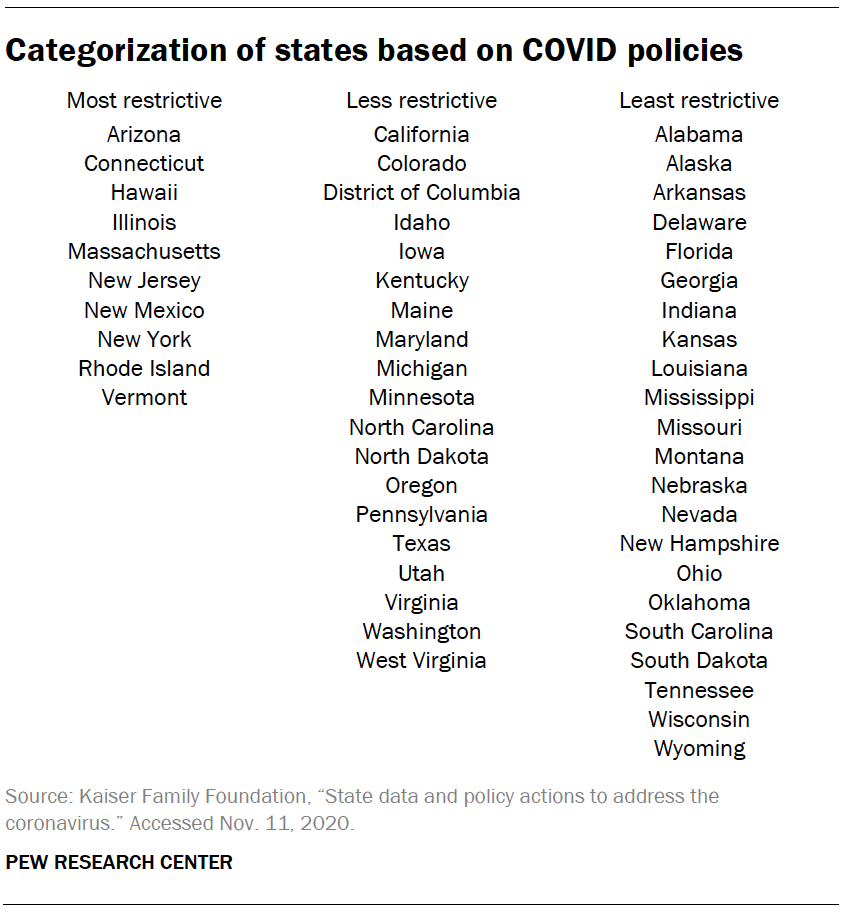
To classify states based on the social-distancing policies they have in place, researchers relied on the Kaiser Family Foundation’s summary of state actions (accessed Nov. 11, 2020).
States were given a score based on the number of measures they have in place to prevent the spread of the coronavirus. These include:
- Stay at home orders
- Mandatory quarantines for travelers
- Closures of non-essential businesses
- Closures and restrictions for restaurants and bars
- Limits on gatherings
- Mandatory face coverings
An additive index was created and then the states were divided into three roughly equal sized groups (based on population).
Defining income tiers
To create upper-, middle- and lower-income tiers, respondents’ 2019 family incomes were adjusted for differences in purchasing power by geographic region and for household size. “Middle-income” adults live in families with annual incomes that are two-thirds to double the median family income in the panel (after incomes have been adjusted for the local cost of living and for household size). The middle-income range for the American Trends Panel is about $38,900 to $116,800 annually for an average family of three. Lower-income families have incomes less than roughly $38,900, and upper-income families have incomes greater than roughly $116,800 (all figures expressed in 2019 dollars).
Based on these adjustments, among respondents who provided their income and household size, 33% are lower income, 45% are middle income and 18% fall into the upper-income tier. An additional 4% either didn’t offer a response to the income question or the household size question.
For more information about how the income tiers were determined, please see here.




